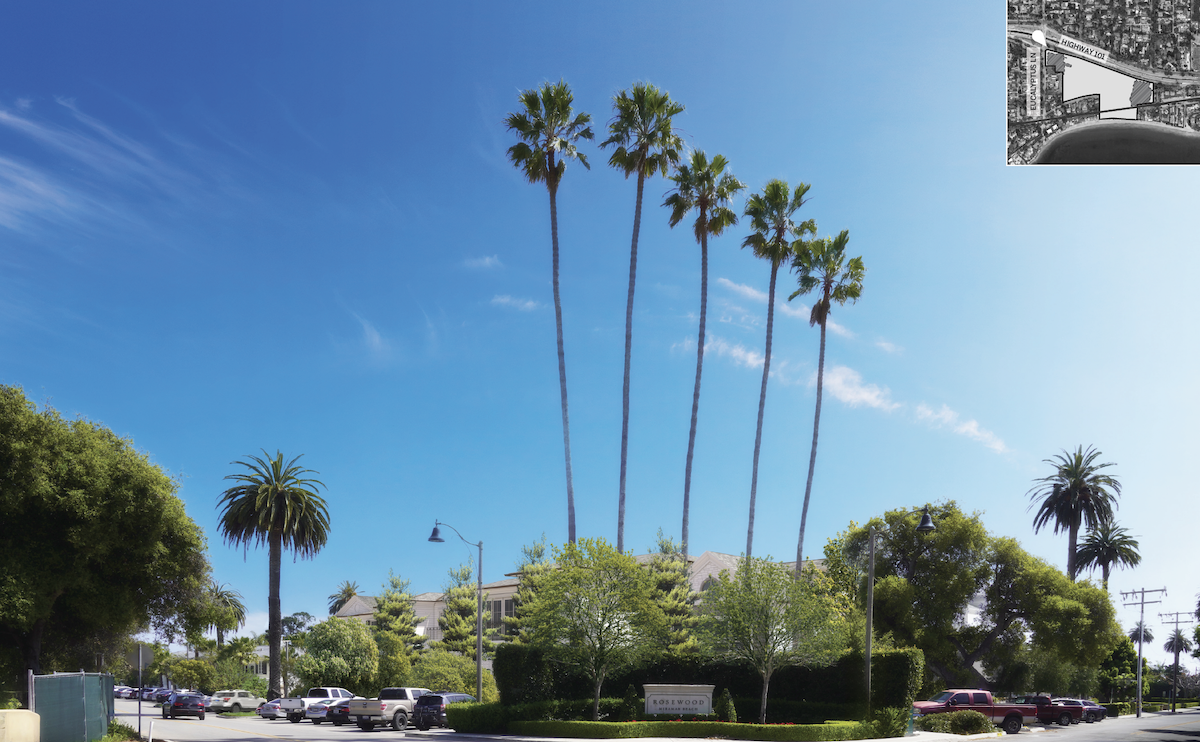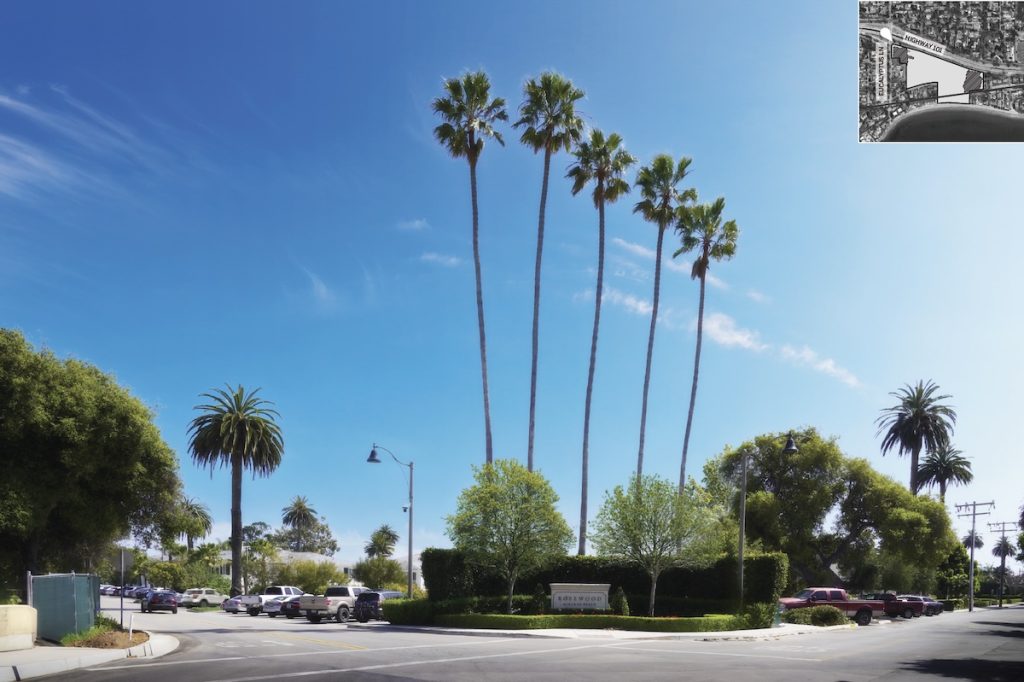The Miramar Plan: Rosewood Expansion Plan Heads to County Commissioners

In October 2023, five years after re-opening under the ownership of Rick Caruso, the Rosewood Miramar officially declared its expansion plans, first presenting to the Montecito Association Land Use Committee and later the Montecito Board of Architectural Review.
The proposed plans include new affordable housing units for staff, luxury apartments for long-term rent, and additional storefronts. The developments would take over the East and West parking lots; eight luxury apartments and 12 shops are planned for the Western parking lot, with the Eastern lot dedicated to 26 affordable employee housing units.
Community members opposed the plans, mainly the luxury storefronts, which, in a letter to the Montecito Journal, Russell Ruiz likened to the “major” retail malls that Caruso is known for. Others praised them, saying the Caruso team is “one of the most respected and admired real estate firms in the country,” according to a letter from Todd Putman to the MJ.
On October 2, the Montecito Planning Commission (MPC) was supposed to review the current plans, but at the September 18 meeting, MPC members voted unanimously to cancel that meeting in hopes of rescheduling to a later date. MPC member Sandy Stahl cited a lack of information on the Miramar project as a reason to postpone.
The Rosewood Miramar expansion is one of four major projects slated for the area – in addition to the Biltmore and Coral Casino renovations, and the Music Academy’s proposed Conditional Use Permit changes, all of which are perceived to affect the area’s traffic patterns and the throughput of the community. In a later phone call, Stahl shared that she wants to see an updated study showing the simultaneous impact of these different projects on the area, citing traffic as one of her concerns. “I was saying that I just felt that we hadn’t been given sufficient information.”
Santa Barbara County Director of Planning and Development Lisa Plowman encouraged Stahl to attend the October 2nd meeting, saying, “If you still feel like you don’t have enough information, then we can continue the item. But perpetually postponing items, I don’t think, is the benefit of the application or the commission.” Stahl then rejected Plowman’s request, saying, “I just feel the information for the community is my priority over the applicant, so that’s why I would like to postpone.”
MPC members could not decide on a new hearing date as the County proposed only two dates in October, both of which representatives from the All Saints-by-the-Sea Episcopal Church could not make. The church is neighbors with the Miramar. Ultimately, they decided to schedule two dates in October for the 18th and 23rd. “Why are we only considering dates in October,” Stahl asked. In a separate letter, the church asked for a date in November. Commissioner Stahl felt that an All Saints representative should be present for the meeting and reschedule for a date when they are available. “I still don’t understand how we can consider dates in October when a very major part of the community has already stated to us that they are not available in October…I just feel like it’s slapping them in the face,” relayed Stahl concerning All Saints. Other MPC members echoed this concern.
Plowman felt that it was important to move the project forward so as to not further delay the Miramar. “My thinking is that applicants have due process, right? So when they’re ready to go to hearing, we don’t delay them unnecessarily,” said Plowman in a phone call. “It’s important to be able to schedule projects to move forward, particularly affordable housing projects.”
The affordable housing element of the project considers the SB330, or the Housing Crisis Act of 2019, which aims to address California’s housing shortage by streamlining development processes, protecting existing housing, and encouraging more housing construction.

Following the September 18 meeting, Caruso’s team sent a letter to Plowman citing county code section 2-25.2, which says that MPC is not within its jurisdiction to consider the project as it is a matter of affordable housing. They requested that the project be moved to the County Planning Commission. This would have meant that if the County does not direct jurisdiction back to the MPC, commission members could not share their thoughts on the proposed plans. As of now, the CPC will vote on October 9th.
In a phone call, Plowman stated that she was unaware affordable housing projects in Montecito were under the jurisdiction of the County Planning Commission, pursuant to Chapter 2-25 of the County code. Had she known this before the September 18th meeting, she would not have presented the project to the Montecito Planning Commission “as if they were going to hear it.” “That is unfortunate,” she said. “You know, I wish that had happened in a different order, that I would have known that in advance.”
Some have questioned why the affordable housing plan is coupled with the luxury apartments and storefront plans, suggesting they be presented as separate entities. Plowman said this is impossible as the commercial and residential plans are “inextricably linked because they’re a state density bonus mixed-use project. One part of the project financially supports another part of the project, so you cannot separate.”
According to Plowman, “SB 330 requires that 2/3rds of the project square footage must be designated for residential uses to receive the protections under the law. The provision of affordable units allows the developer to avail themselves of the State Density Bonus law. They only need to provide 20% affordable units to qualify, but as you know the Miramar is providing significantly more affordable units – over 60%.”
Posted on the County website, the expansion plan would entail the following:
The proposed residential and commercial development will be located in the existing northwest and northeast parking lots on site. Development in the northwest parking lot will consist of two new mixed-use buildings, Building A and Building B. Building A will be 16,597 square feet, with 8,573 square feet of residential square footage and 8,024 square feet of commercial square footage. Building A will have a maximum height of 33’-5”. Building B will be 20,786 square feet, with 11,310 square feet of residential square footage and 9,476 square feet of commercial square footage. Building B will have a maximum height of 30’-2”. There will be eight market-rate apartments (four on the second-floor of each building) comprised of one one-bedroom unit, four two-bedroom units, and three three-bedroom units. The first floor of the buildings will be commercial space including 15,000 square feet of resort shops and a 2,500-square-foot café. There will be up to 12 resort shops that will be resort/visitor-serving light commercial uses similar in nature to the existing resort shops on site, such as resort-oriented clothing shops, jewelry stores, and wellness/beauty shops. There will also be a subterranean parking lot with 79 parking spaces.
The Caruso’s team has claimed that the ability to add affordable housing to the Miramar property is contingent on these luxury shops. However, the resident workers will still have to pay rent – with a maximum income requirement of $80,000 a year.
In a statement to the MJ, Bryce Ross, EVP of Caruso’s, stated:
“Montecito is one of the areas of Santa Barbara County with the largest housing affordability gaps. We are proud that more than 75 percent of the housing units in our plan will be affordable units for employees of The Miramar…Originally, we had anticipated that the plan would be heard by the Montecito Planning Commission. But last week, the commission canceled the meeting where our matter was scheduled to be heard.
The cancellation of a number of scheduled meetings earlier this year, and concerns about the ability to secure the legal minimum number of members needed to hold a hearing, led to uncertainty about scheduling a hearing for The Miramar plan. The delay started to look indefinite. This prompted a closer look at the County Code.
The Code is clear: Planning applications in Santa Barbara County involving affordable housing are the jurisdiction of the County Planning Commission, which also approved the County Housing Element that included The Miramar as a location for housing.
County Planning staff agreed with this finding, and County Counsel affirmed this conclusion. That’s what led to The Miramar matter being scheduled for October 9. The community will have the same opportunities to participate in the public hearing process.
We deeply appreciate the level of community engagement over the past two years. We listened to neighbors’ priorities and made significant changes to address what we heard. This includes eliminating a planned driveway from Eucalyptus Lane, eliminating a full floor from the plan at the corner of Eucalyptus and Jameson, reducing it to two floors, reducing the space dedicated to shops, and increasing the number of affordable units for Miramar employees.
We look forward to the next step in the process of bringing this important plan to fruition.”
MPC member Ron Pulice felt that the decision to remove MPC from reviewing the Miramar plans was “ludicrous.” The role of MPC is to provide insight into proposed projects that other County officials may not understand. “We have a community plan, and it’s our job to keep our community plan alive and well and not to stretch to the point where we now have a mall on the freeway,” said Pulice – who plans to propose a special meeting so MPC members can properly discuss the Miramar project. “That’s why we established the Montecito Planning Commission.”
After the County pushed the project through the Montecito Planning Commission, MPC members felt their voices had been ignored on a matter that would significantly impact the future of Montecito. “It is a bizarre twist of events to take this away from any public body that really has jurisdiction over Montecito,” said MPC member Bob Kupiec.
While speaking with Plowman, it was noted that there is a limit of five hearings that can be held under State law with Plowman emphasizing that the County Planning Commission has to follow the guidance given by SB330. “The discretion is very limited and that is the way the state has set it up – these projects can only be measured against objective standards.” Plowman gave the standards of a “5-foot set back height limit” or if water was unavailable as examples.
If a CPC decision is appealed, then the project would be turned over to the County’s Board of Supervisors in a ‘de novo hearing.’ An appeal would have to be filed within the five hearings and can only be filed after a decision has been made by the CPC with the appellant having up to 10 days to file following the decision. Plowman adding, “I’m fully expecting that an appeal will be filed by somebody.”







You must be logged in to post a comment.